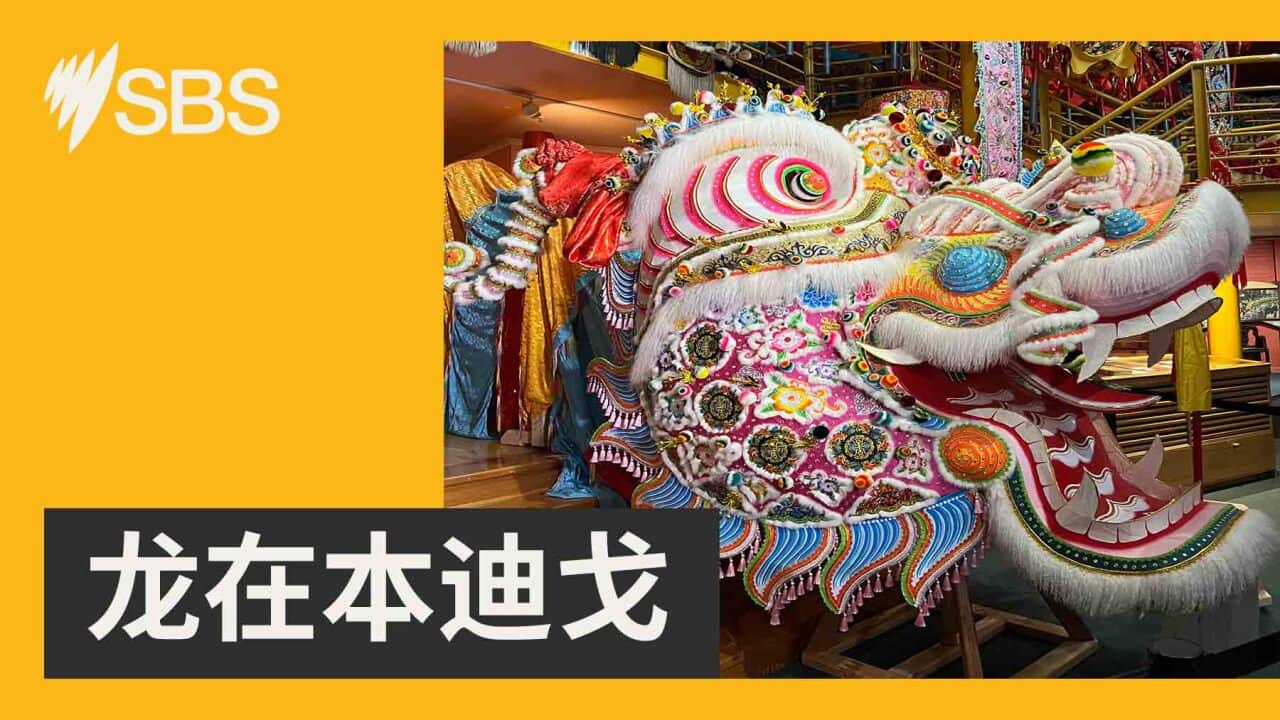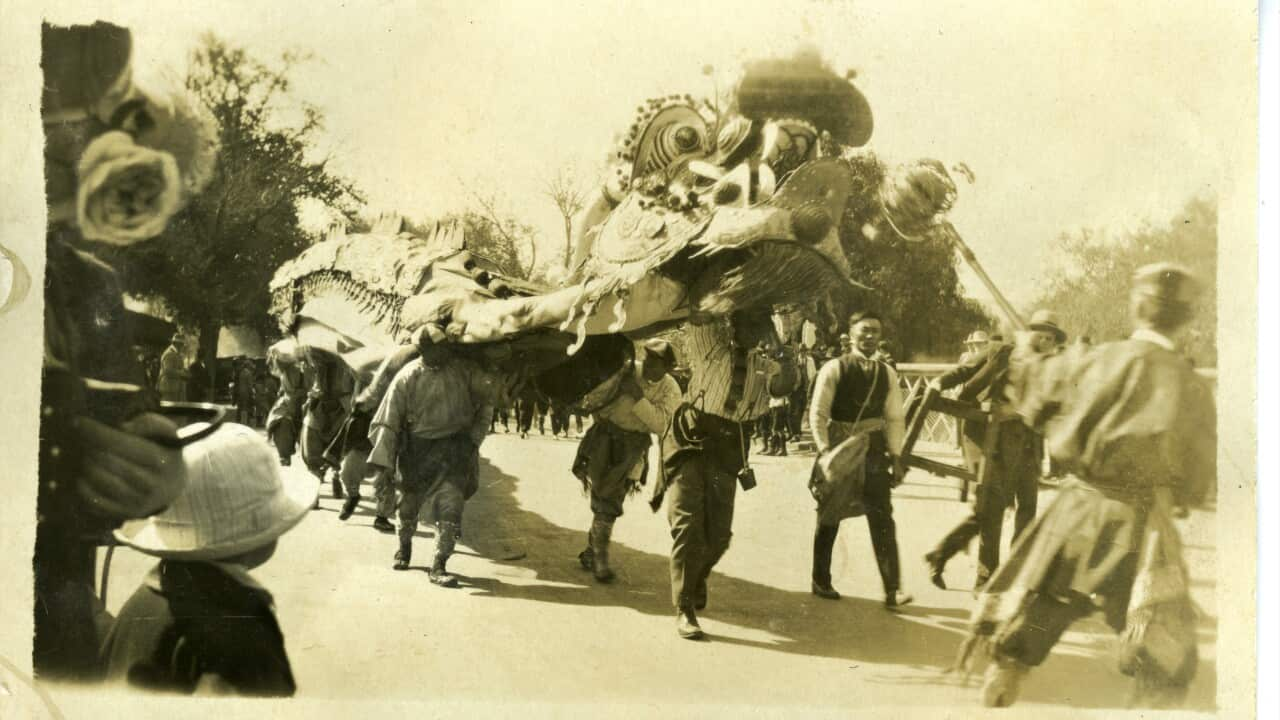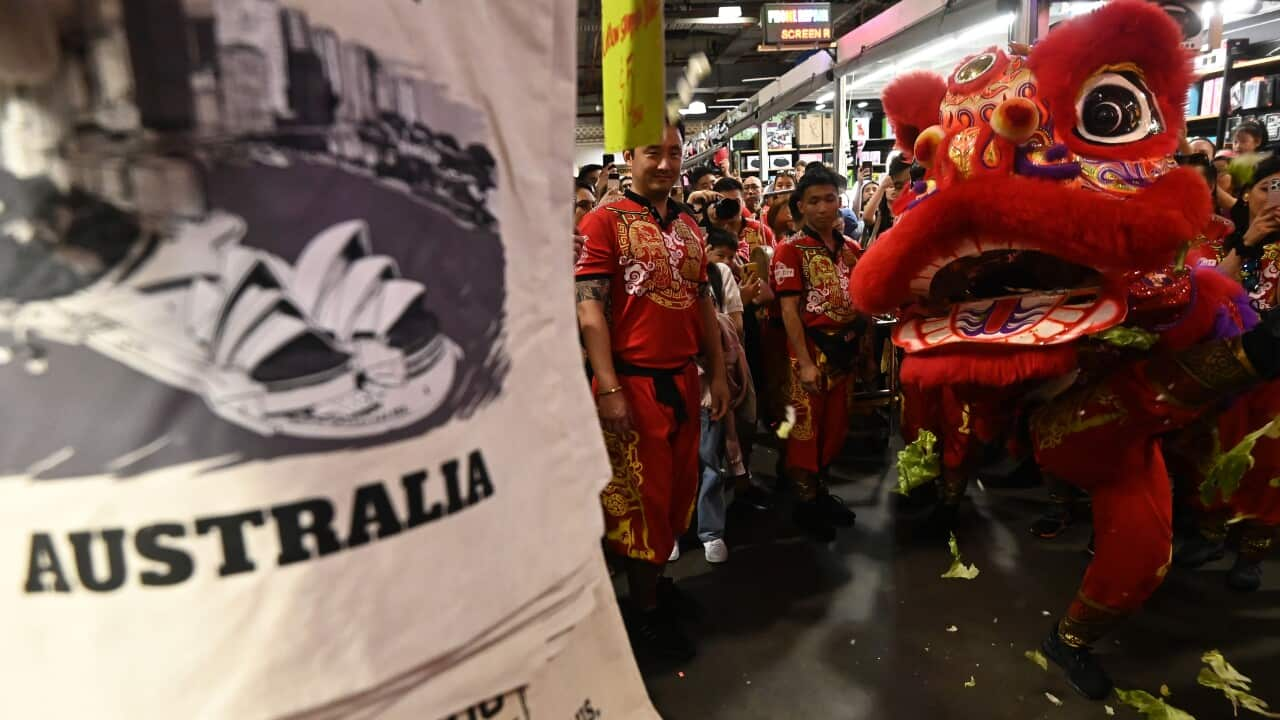Key Points
- For over a century, Loong, Sun Loong, and Dai Gum Loong have collectively played a vital role in Bendigo's annual Easter Festival.
- Initially attracted by the gold rush of the mid 19th century, the Chinese community has been taking part in the parades and fundraising since 1879.
- Handmade in Guangdong and Hong Kong, the three dragons are displayed in Bendigo's Golden Dragon Museum.
As the Lunar New Year approaches, Sun Loong is set to be "blessed" and “awakened” in a traditional ceremony to celebrate the Year of the Dragon, considered by many to be the most auspicious animal of the Chinese zodiac.
The appearance of Sun Loong, one of Bendigo's favourite dragons, is anticipated to attract a crowd well over previous Lunar New Year celebrations, according to Doug Lougoon, President of the Bendigo Chinese Association.
On 10 February, the first day of the Year of the Dragon, Sun Loong will hit the streets of Bendigo amid a hail of exploding firecrackers.
As Bendigo’s parade dragon from 1970 to 2019, Sun Loong was restored before it was put on permanent display in the town's Golden Dragon Museum in 2019.
A century of dragons in Bendigo
Sun Loong was the second of Bendigo's three main processional dragons and was brought from Hong Kong to replace the first dragon, Loong, in 1970.
According to the museum, Sun Loong requires 57 carriers and measures approximately 100 metres in length. It features 40,000 beads and 90,000 mirrors and its head weighs 20.5kg.

Sun Loong was Bendigo's parade dragon from 1970 until 2019. Source: Supplied / bendigo.vic.gov.au

Loong was paraded from 1901 to 1970 and holds the distinction of being the oldest intact processional dragon in the world. Source: SBS / Helen Chen
Loong requires 22 carriers and is about 29 metres long.

The May 1901 parade which represented Loong's first outing. Credit: Golden Dragon Museum

Dai Gum Loong and Sun Loong in the Golden Dragon Museum. Source: SBS / Helen Chen
The Chinese community has been engaged in these efforts since 1879.

Inside the Golden Dragon Museum. Source: SBS / Helen Chen
However, due to the "discriminatory" White Australian Policy, some Chinese had only resided in Bendigo for a few years before moving on, he said.

Leigh McKinnon, research officer at the Golden Dragon Museum. Source: SBS / Helen Chen
Lougoon, a third-generation Chinese Australian, traces his roots to his grandfather, Samuel Louey Goon, believed to have come from Taishan in the Guangdong province of China, arriving in Australia in the late 19th century.
"I'm third generation while there are also fourth, fifth, and sixth generation members … and in the last Census, there were about 1500 or 1600 people claiming to have Chinese ancestry (in the town). (However) We believe there's probably twice that number," he said.

Doug Lougoon, President of the Bendigo Chinese Association. Source: SBS / Helen Chen
Former Association President, Russell Jack AM, 89, is a second-generation Chinese Australian.
He said his father, Louey Jack, also hailing from Taishan, instilled the value of helping the Chinese community in him from a young age.
"As I was growing up, my father told me, 'Yeung Man (Jack’s Chinese name in Taishan dialect), when you grow up, I want you to look after the Chinese people in Bendigo,'” Jack said.
“I got involved with the Bendigo Chinese Association, which was probably the best day's work I've ever done in my life."

Russell Jack AM, 89, has been a supporter of the Bendigo Chinese Association for most of his life. Source: SBS / Helen Chen
Over the years, he has taken on various responsibilities, serving as Treasurer before assuming the position of President in 1980.
Jack’s service extends beyond serving as President for 32 years until 2012; he also played a pivotal role in founding the Golden Dragon Museum and is nicknamed the “Golden Dragon Warrior”.
He said all of his achievements were only possible because of the support of his late wife, Margaret (Joan), who once sold off fabric samples to raise money for the building of the museum.
While Joan had not herself been of Chinese descent, Mr Jack said in his eyes, his wife had been "more Chinese than most Chinese".
Echoing Mr Lougoon’s recollections of the Chinese population dwindling by the middle of the 20th century, Jack said he believed many left in pursuit of better education opportunities.
“At one stage of the game, there were only two people (at functions) - my wife and myself,” Jack said.

Bendigo's Golden Dragon Museum opened its doors in 1991. Source: SBS / Helen Chen
Chinese culture is woven into the heart of Bendigo
Dr Liu Luxin, a scholar researching the history of Chinese immigration to Australia, said he believed that the way that the Chinese culture had woven itself into the everyday fabric of Bendigo was "truly unique".
"I think it's unique even on a global scale. Bendigo's dragons not only boast a long history but, more importantly, they make an appearance every Easter," Luxin said.
"Even during the strict enforcement of the White Australia Policy era, when there were no new Chinese immigrants for two or three consecutive years, the parade still took place.
“I believe Bendigo showcases one of the best examples of Chinese culture seamlessly blending into the local community.”
A recent immigrant, Jess Hu, from Beijing, resonates with this sentiment.
"I feel that Chinese culture has integrated with Bendigo culture," she said.
When we promote Chinese culture, it's not to highlight our differences with others. What we are promoting is the integration and harmony of everyone.Jess Hu

New immigrant Jess Hu from Beijing, China. Source: SBS / Helen Chen
"Our Bendigo Chinese community has a history of fundraising for charity for more than 150 years. Around the world, there is nowhere else like Bendigo. Bendigo is my home," Tan said.

Chinese immigrant Tan See Tuang from Malaysia. Source: SBS / Helen Chen
Celebrate the magic of Lunar New Year with SBS. Visit for more news, celebration guides, recipes, movies, and entertainment.
Listen to SBS's Bendigo Golden Dragon podcast series

龙在本迪戈



